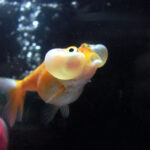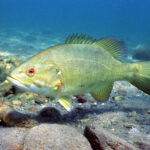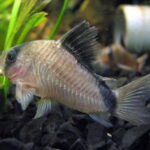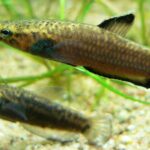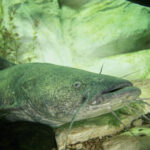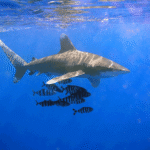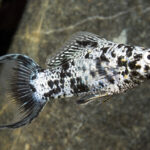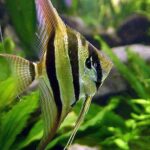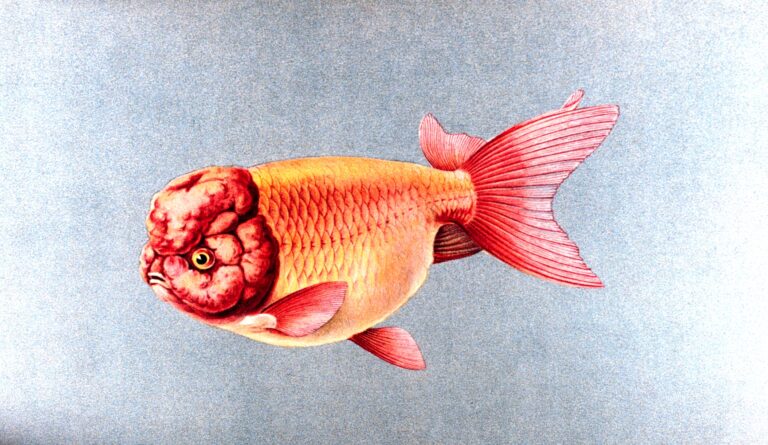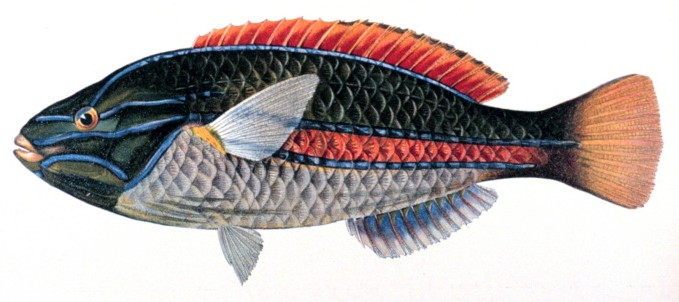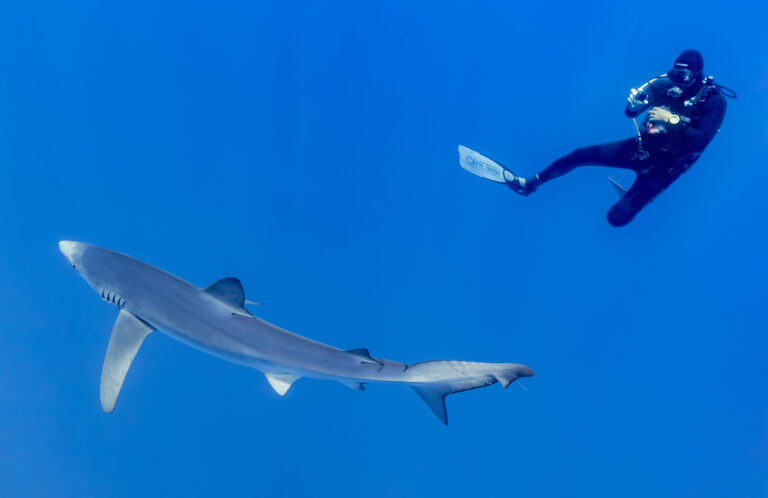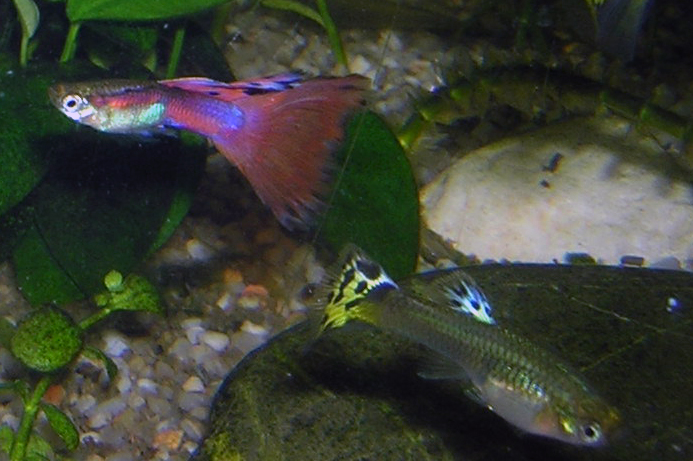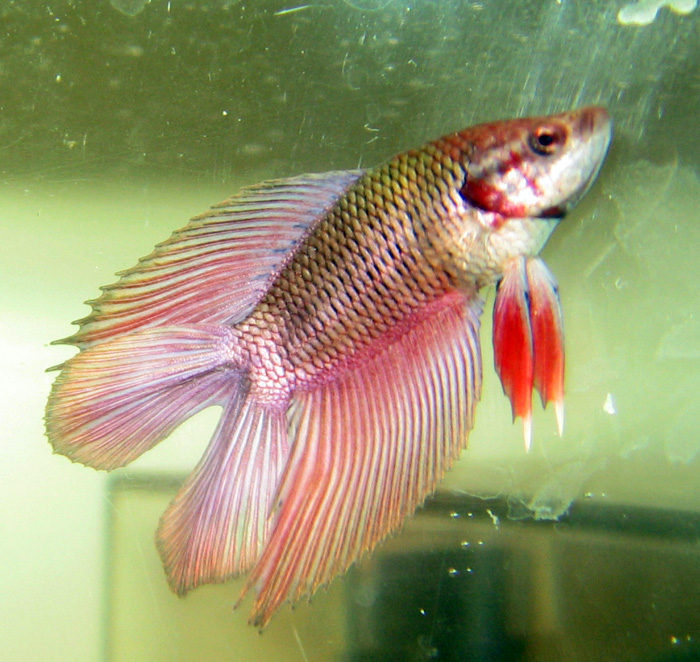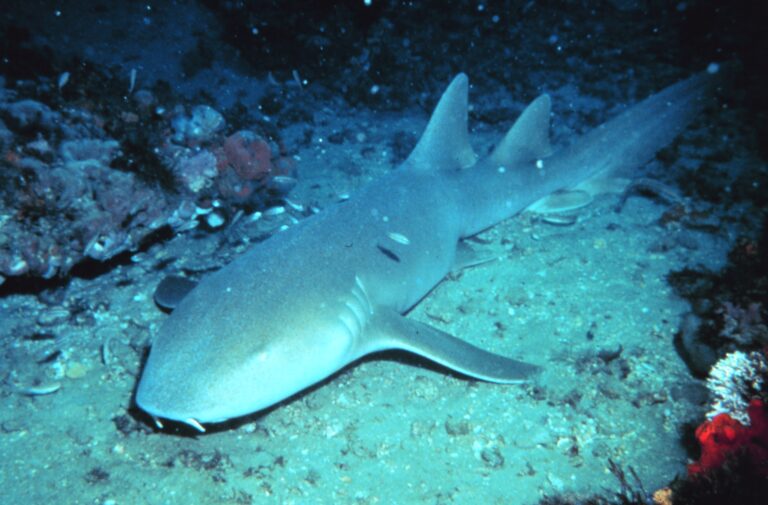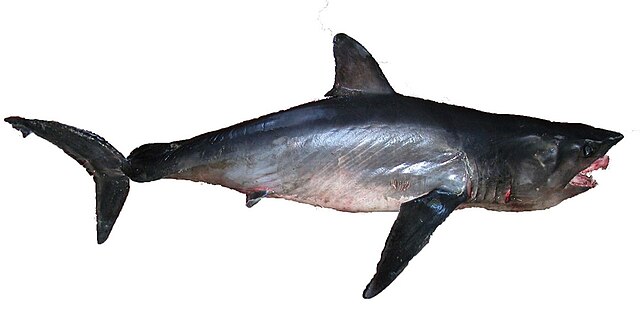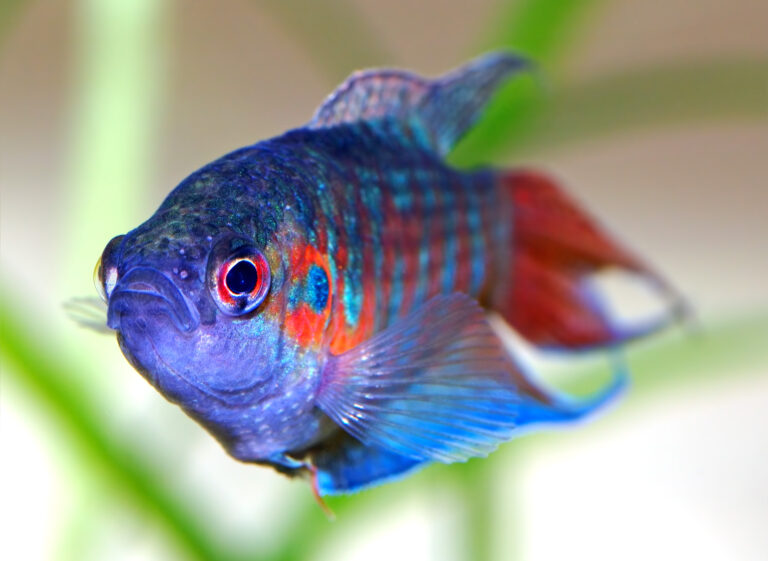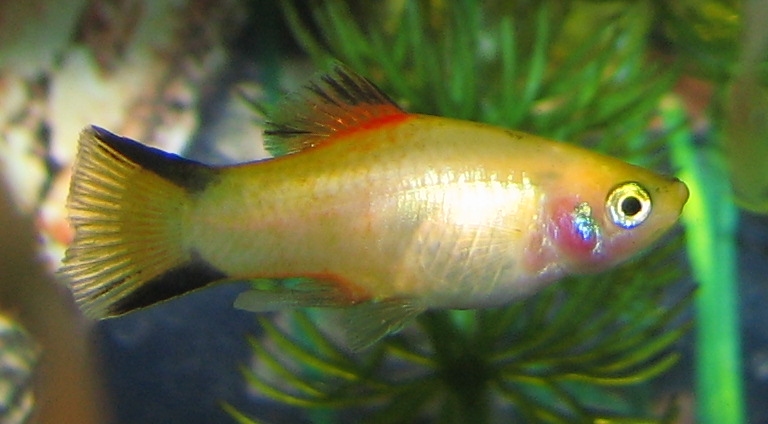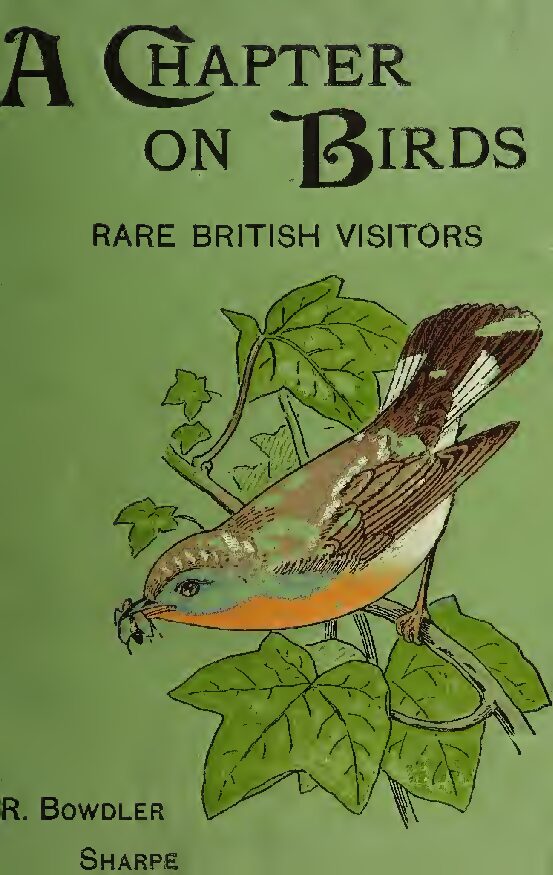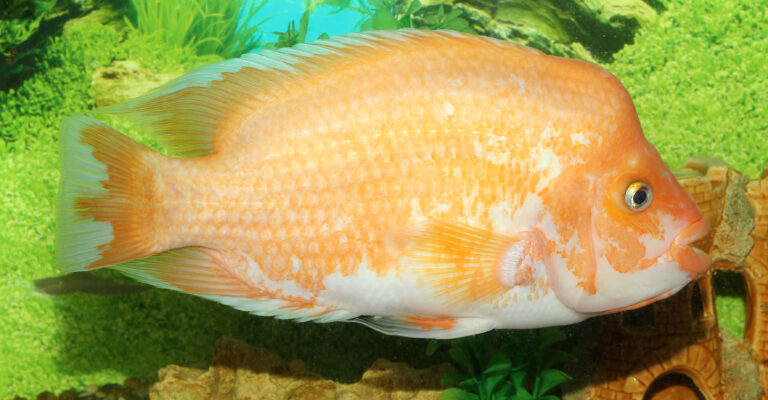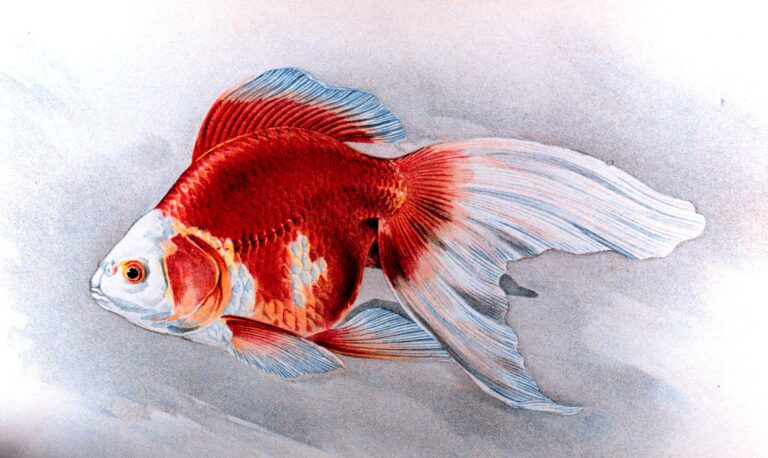Honey Gourami
By Ryan Maron | Last Modified: June 10, 2025
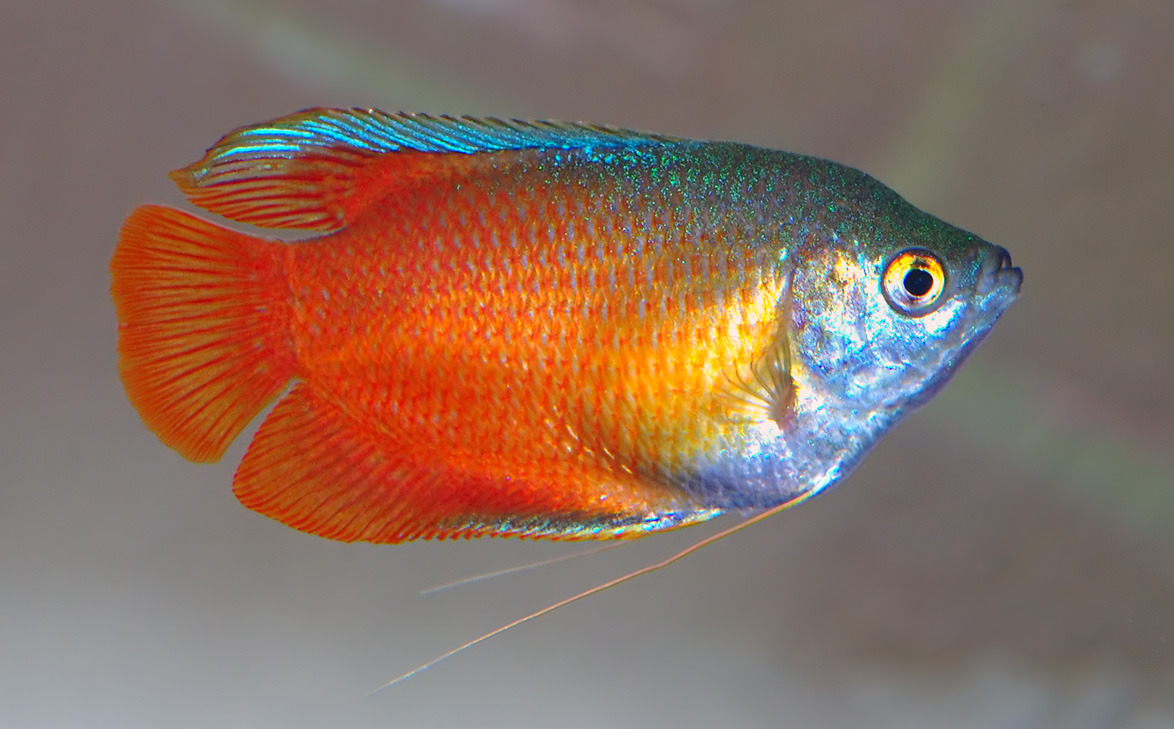
The Honey Gourami (*Trichogaster chuna*) stands as one of the most captivating freshwater fish species in the aquarium trade, distinguished by its remarkable color-changing abilities and peaceful temperament. Originally native to the river systems of India and Bangladesh, this small labyrinth fish has earned recognition among aquarists and ichthyologists alike for its distinctive breeding behaviors and adaptive resilience. The species plays a crucial ecological role as both predator and prey within its native freshwater ecosystems, contributing to the delicate balance of invertebrate populations while serving as an important food source for larger piscivorous species.
Within the aquarium hobby, the Honey Gourami represents an ideal species for community tanks due to its non-aggressive nature and minimal space requirements. However, its significance extends beyond the ornamental trade, as wild populations face increasing pressure from habitat degradation and collection practices. Understanding the biology, behavior, and conservation needs of *Trichogaster chuna* provides valuable insights into the broader challenges facing Southeast Asian freshwater ecosystems and the importance of sustainable aquaculture practices.
| Feature | Details |
|---|---|
| Common Name | Honey Gourami |
| Scientific Name | Trichogaster chuna |
| Family | Osphronemidae |
| Typical Size | 4-5 cm (1.6-2 inches) |
| Habitat | Shallow rivers and tributaries |
| Diet | Omnivorous micropredator |
| Distribution | India and Bangladesh |
| Conservation Status | Least Concern |
Taxonomy & Classification
The Honey Gourami belongs to the family Osphronemidae, commonly known as the gourami family, which encompasses approximately 133 species across 15 genera. Within this diverse family, *Trichogaster chuna* represents one of the smaller species, classified under the genus *Trichogaster* alongside other popular aquarium species such as the Pearl Gourami (*Trichogaster leerii*) and the Blue Gourami (*Trichogaster trichopterus*). The species was first scientifically described by Hamilton in 1822, though taxonomic confusion persisted for decades due to misidentification with closely related species.
The classification hierarchy places the Honey Gourami within the order Anabantiformes, which includes all labyrinth fish species possessing the specialized labyrinth organ. This anatomical adaptation allows these fish to breathe atmospheric oxygen directly, making them well-suited to oxygen-poor environments. Recent molecular phylogenetic studies have confirmed the placement of *Trichogaster chuna* within its current taxonomic position, distinguishing it from the previously confused *Trichogaster sota*, with which it was often synonymized in earlier literature.
Subspecies recognition within *Trichogaster chuna* remains limited, though geographical variations in coloration and fin morphology suggest potential population-level differences across its native range. The species exhibits closest genetic relationships to other small-bodied *Trichogaster* species, forming a distinct clade within the genus characterized by reduced adult size and specific breeding behaviors.
Physical Description
The Honey Gourami displays remarkable sexual dimorphism and color variation, particularly during breeding periods. Adult specimens typically reach 4-5 centimeters in total length, with females often achieving slightly larger sizes than males. The body shape follows the characteristic gourami profile, featuring a laterally compressed, oval form with a slightly pointed snout and relatively large eyes positioned high on the head.
Male Honey Gouramis undergo dramatic color transformations during breeding periods, shifting from pale yellow-gold coloration to intense honey-orange hues with contrasting black throat patches. The dorsal and anal fins become elongated and pointed in mature males, often extending beyond the base of the caudal fin. Females maintain more subdued coloration throughout their lifecycle, displaying consistent pale yellow to silver tones with minimal fin extension.
The labyrinth organ, housed within the suprabranchial chamber, represents the most distinctive anatomical feature of this species. This complex structure consists of folded tissue richly supplied with blood vessels, enabling efficient oxygen extraction from atmospheric air. The pelvic fins have evolved into thread-like sensory appendages, allowing the fish to explore its environment through tactile sensation. These modified fins can be extended forward and moved independently, serving as important tools for navigation and food detection in murky water conditions.
Scale patterns follow the typical perciform arrangement, with cycloid scales providing the characteristic smooth texture. The lateral line system remains incomplete in most specimens, extending only partially along the body length. This morphological feature distinguishes *Trichogaster chuna* from many other freshwater species and reflects its adaptation to specific ecological niches.
Habitat & Distribution
The natural distribution of the Honey Gourami encompasses the river systems of northeastern India, particularly within the Brahmaputra River basin, and extends into Bangladesh through connected waterways. Primary habitat zones include shallow, slow-moving streams, tributaries, and flooded areas associated with monsoon cycles. These environments typically feature dense aquatic vegetation, fallen timber, and organic debris that create complex microhabitat structures essential for the species’ survival.
Water parameters in native habitats fluctuate seasonally, with temperatures ranging from 22-28°C during most of the year and pH levels typically maintained between 6.0-7.5. Dissolved oxygen concentrations often remain low due to high organic loading and minimal water movement, conditions that favor species possessing labyrinth organs. The substrate composition varies from fine sand to decomposing organic matter, supporting diverse invertebrate communities that form the primary food base for juvenile and adult Honey Gouramis.
Seasonal flooding plays a crucial role in the species’ lifecycle and habitat utilization patterns. During monsoon periods, rising water levels provide access to temporarily flooded terrestrial areas rich in food resources and breeding opportunities. These expanded habitats support higher population densities and facilitate genetic exchange between otherwise isolated populations. As flood waters recede, fish concentrate in permanent water bodies, increasing competition for resources and breeding territories.
Human activities have significantly altered many traditional Honey Gourami habitats through agricultural development, dam construction, and urban expansion. Current distribution mapping efforts indicate population fragmentation in several regions, though the species maintains stable numbers in protected areas and less developed watersheds.
Diet & Feeding Behavior
The Honey Gourami functions as an opportunistic omnivore, exhibiting feeding behaviors that change significantly based on seasonal availability and life stage requirements. Adult specimens primarily consume small invertebrates, including mosquito larvae, copepods, water fleas, and various insect stages found among aquatic vegetation. This micropredatory behavior positions the species as an important regulator of invertebrate populations within its ecosystem.
Foraging strategies involve systematic searching through plant material and substrate debris, utilizing the modified pelvic fins to locate hidden prey items. The upturned mouth orientation facilitates surface feeding, allowing efficient capture of floating insects and emerging larvae. During periods of high invertebrate abundance, particularly following monsoon flooding, Honey Gouramis may form loose aggregations to exploit concentrated food sources.
Plant material comprises approximately 30-40% of the adult diet, including algae, soft plant tissues, and organic detritus. This herbivorous component becomes increasingly important during dry seasons when invertebrate prey densities decline. Juvenile specimens display higher proportions of plant material consumption, gradually shifting toward more carnivorous diets as they mature and develop enhanced prey capture capabilities.
Feeding frequency and intensity correlate directly with water temperature and daylight hours. Peak feeding activity occurs during dawn and dusk periods when many prey species become most active. The species exhibits remarkable feeding plasticity in captive environments, readily accepting various commercial foods while maintaining preference for live or frozen invertebrate prey. This adaptability contributes significantly to their success in aquarium environments and commercial breeding operations.
Behavior & Adaptations
The Honey Gourami demonstrates complex behavioral patterns that reflect its evolutionary adaptations to variable freshwater environments. Social structure remains relatively fluid, with individuals forming loose aggregations during feeding but maintaining individual territories during breeding periods. Aggression levels remain minimal compared to many gourami species, making *Trichogaster chuna* particularly suitable for community aquarium settings.
Territorial behavior emerges primarily during reproductive periods when males establish and defend nesting areas. These territories typically encompass 20-30 square centimeters of surface area beneath floating vegetation or debris. Males employ visual displays, including fin spreading and color intensification, to communicate territorial boundaries and attract potential mates. Physical confrontations rarely result in serious injury due to the species’ relatively peaceful nature.
The labyrinth organ provides crucial behavioral flexibility, enabling the species to inhabit oxygen-depleted environments that exclude many competitor species. Regular surface breathing behavior occurs throughout the day, with frequency increasing in response to reduced dissolved oxygen levels or elevated temperatures. This physiological adaptation allows Honey Gouramis to exploit ecological niches unavailable to gill-breathing species exclusively.
Stress response mechanisms include color fading, reduced activity levels, and increased hiding behavior among vegetation or structural elements. These responses serve as important indicators of environmental quality and population health in both wild and captive populations. The species exhibits notable behavioral plasticity in response to environmental changes, demonstrating learned behaviors that enhance survival in variable conditions. Such adaptations reflect the dynamic nature of their native freshwater ecosystems and contribute to their resilience in face of habitat modifications.
Reproduction & Life Cycle
The reproductive biology of the Honey Gourami follows the bubble-nesting strategy characteristic of many Osphronemidae species, with males constructing floating foam nests to house developing eggs and larvae. Breeding behavior initiates with territorial establishment by males, typically occurring during warmer months when water temperatures exceed 26°C and food abundance remains high. The nest construction process involves the male collecting air bubbles mixed with saliva, creating a cohesive floating structure measuring 3-5 centimeters in diameter.
Courtship displays feature dramatic color changes in males, with honey-orange coloration intensifying and contrasting black throat patches becoming prominent. Males actively pursue females through elaborate swimming patterns, displaying extended fins and performing circular movements around potential mates. Receptive females approach the nest site, where spawning occurs through a characteristic embrace beneath the bubble nest structure.
Egg deposition typically involves 100-300 individual eggs, depending on female size and condition. The transparent, slightly adhesive eggs measure approximately 1 millimeter in diameter and require 24-36 hours for hatching under optimal temperature conditions. Males assume exclusive parental care responsibilities, guarding the nest site and collecting any eggs that fall from the foam structure. Fry become free-swimming approximately 3-4 days post-hatching, at which point male parental care typically ceases.
Juvenile development progresses through several distinct phases, with fish reaching sexual maturity at 6-8 months of age under favorable conditions. Growth rates depend heavily on temperature, food availability, and population density, with optimal conditions producing adult-sized specimens within 10-12 months. The species exhibits determinate growth patterns, with adult size remaining relatively consistent once maturity is achieved. Multiple spawning events may occur throughout extended breeding seasons, contributing to population stability and genetic diversity within local groups.
Predators & Threats
Natural predation pressure on Honey Gourami populations comes from various sources throughout different life stages, with eggs and larvae facing the highest mortality rates. Fish predators include larger gourami species, snakehead fish (*Channa* species), and various cyprinid species that inhabit overlapping habitats. Adult specimens face predation from piscivorous birds, particularly during surface breathing behaviors that expose them to aerial predators such as kingfishers and herons.
Invertebrate predators pose significant threats to early life stages, with dragonfly nymphs, water beetles, and large copepods consuming eggs and newly hatched fry. The bubble nest structure provides some protection, but predation losses during the first week of life typically exceed 70% in natural populations. This high mortality rate drives the species’ reproductive strategy of multiple spawning events and relatively large clutch sizes.
Anthropogenic threats represent increasingly significant challenges for wild Honey Gourami populations. Habitat degradation through agricultural runoff introduces pesticides and fertilizers that disrupt aquatic food webs and directly impact fish health. Water extraction for irrigation reduces available habitat during dry seasons, concentrating populations and increasing competition for limited resources.
Climate change effects manifest through altered monsoon patterns and increased temperature extremes that stress physiological tolerance limits. Pollution from industrial and urban sources introduces heavy metals and organic compounds that accumulate through food chain biomagnification. Collection pressure for the aquarium trade, while not immediately threatening to species survival, can impact local population dynamics in areas with intensive harvesting activities. Current threat assessments indicate moderate concern for specific populations while maintaining stable species-level status.
Conservation Status
The International Union for Conservation of Nature currently classifies the Honey Gourami as Least Concern, reflecting stable population trends across most of its native range. However, this designation masks significant regional variations in population health and habitat quality that warrant ongoing monitoring efforts. Local population declines have been documented in heavily developed watersheds, particularly near major urban centers where water quality degradation and habitat fragmentation present persistent challenges.
Conservation priorities focus on habitat preservation and restoration, emphasizing the protection of shallow wetland areas crucial for breeding success. Existing protected areas within the species’ range provide important refugia, though many populations exist outside formal conservation boundaries. Water quality monitoring programs have identified several key watersheds requiring immediate attention to prevent further population declines.
The species benefits significantly from its popularity in the aquarium trade, which has stimulated extensive captive breeding programs that reduce collection pressure on wild populations. Commercial breeding facilities throughout Southeast Asia now produce millions of specimens annually, meeting international demand while preserving genetic diversity through careful breeding stock management. These programs also serve as genetic repositories that could support future reintroduction efforts if wild populations face severe declines.
Research priorities include long-term population monitoring, genetic diversity assessments, and habitat restoration effectiveness studies. Climate change adaptation strategies require development to address projected shifts in precipitation patterns and temperature regimes. International cooperation between India and Bangladesh remains essential for coordinated conservation efforts across the species’ transboundary range. Education programs targeting local communities can promote awareness of freshwater ecosystem conservation while supporting sustainable livelihood alternatives.
Human Interaction
The relationship between humans and Honey Gouramis extends far beyond the ornamental fish trade, encompassing cultural, economic, and ecological dimensions that span several centuries. In rural communities throughout the species’ native range, Honey Gouramis serve as indicators of ecosystem health, with their presence often signaling good water quality and balanced aquatic communities. Traditional ecological knowledge among local fishers recognizes the species’ role in controlling mosquito populations, contributing to public health benefits in areas where vector-borne diseases remain prevalent.
Commercial aquaculture represents the primary economic interaction, with breeding facilities producing millions of specimens annually for domestic and international markets. The species’ relatively simple breeding requirements and peaceful temperament have made it a cornerstone species for small-scale aquaculture operations. These enterprises provide income opportunities for rural communities while reducing pressure on wild populations through sustainable production methods.
Scientific research applications utilize Honey Gouramis as model organisms for studying labyrinth fish physiology, particularly respiratory adaptations and environmental stress responses. University research programs and aquaculture institutes conduct ongoing studies examining breeding optimization, disease resistance, and genetic diversity maintenance. Such research contributes valuable knowledge applicable to broader fish conservation and aquaculture development efforts.
Educational value extends through school programs and public aquariums where Honey Gouramis demonstrate Southeast Asian freshwater biodiversity. Their manageable size and hardy nature make them excellent subjects for teaching aquatic ecology concepts and responsible pet ownership. Species information databases facilitate access to biological data supporting both scientific research and hobbyist understanding. The species’ adaptation to captive environments has established it as an ambassador species for freshwater conservation awareness programs.
Interesting Facts
The Honey Gourami possesses several remarkable characteristics that distinguish it from other freshwater fish species and contribute to its biological success. Perhaps most fascinating is the species’ ability to recognize and respond to its own reflection, demonstrating cognitive capabilities typically associated with more complex vertebrates. Research studies have documented individual recognition behaviors and spatial learning abilities that suggest higher-order processing capabilities within their relatively small brains.
Color-changing abilities extend beyond simple breeding displays, with individuals capable of rapid chromatophore adjustments in response to environmental conditions, social interactions, and emotional states. These changes occur within seconds and involve complex neural pathways that integrate visual, chemical, and tactile stimuli. The mechanisms underlying these rapid color shifts continue to interest researchers studying fish communication and stress physiology.
The species exhibits remarkable longevity for its size, with properly maintained captive specimens living 4-6 years under optimal conditions. This extended lifespan allows for complex learned behaviors and social relationship development that enhance survival success in variable environments. Wild populations likely experience shorter lifespans due to predation and environmental stresses, though exact longevity data remains limited.
Honey Gouramis demonstrate unusual parental care flexibility, with some males continuing nest maintenance and fry protection for extended periods beyond the typical species pattern. This behavioral variation suggests individual personality differences and environmental adaptation capabilities that contribute to population resilience. Temperature sensitivity affects not only breeding success but also sex determination ratios in some populations, though the mechanisms remain incompletely understood.
The species’ relationship with aquatic plants extends beyond simple habitat utilization, with some evidence suggesting they may contribute to seed dispersal for certain plant species through their feeding and movement patterns. This ecological service highlights the interconnected nature of freshwater ecosystems and the important roles played by seemingly minor species components.
Frequently Asked Questions
How long do Honey Gouramis live in aquarium environments?
Honey Gouramis typically live 3-5 years in well-maintained aquarium environments, with some exceptional specimens reaching 6 years of age. Lifespan depends significantly on water quality, diet variety, and stress levels. Proper tank maintenance, including regular water changes and appropriate filtration, contributes substantially to longevity. Males may experience slightly shorter lifespans due to the physiological stress associated with breeding behaviors and territorial defense.
What tank size requirements do Honey Gouramis need for optimal health?
A minimum tank volume of 40 liters (10 gallons) accommodates a pair of Honey Gouramis, though larger volumes provide better environmental stability and behavioral expression opportunities. The species benefits from horizontal swimming space more than vertical height, making longer tanks preferable to taller configurations. Multiple individuals require additional space, with approximately 15 liters per additional fish recommended to prevent territorial conflicts and ensure adequate resource availability.
Can Honey Gouramis be kept with other gourami species?
Honey Gouramis generally coexist peacefully with other gourami species of similar size and temperament, though careful species selection remains important. Avoid pairing with aggressive species such as larger gourami varieties that may intimidate or outcompete Honey Gouramis for food and territory. Best tankmates include Pearl Gouramis, Dwarf Gouramis, and other peaceful anabantoid species that share similar environmental requirements and behavioral patterns.
What are the key differences between male and female Honey Gouramis?
Sexual dimorphism becomes pronounced in mature specimens, with males displaying more vibrant coloration, elongated fins, and territorial behaviors. During breeding periods, males develop intense honey-orange coloration with distinctive black throat patches, while females maintain subdued yellow-silver tones throughout their lifecycle. Males also construct bubble nests and exhibit parental care behaviors, whereas females focus primarily on egg production and selection of suitable mates and nesting sites.
Conclusion
The Honey Gourami represents a remarkable example of evolutionary adaptation to variable freshwater environments, combining physiological resilience with behavioral flexibility that ensures species persistence across diverse ecological conditions. As both a valuable component of Southeast Asian aquatic ecosystems and a beloved aquarium species, *Trichogaster chuna* bridges the gap between conservation science and public engagement with freshwater biodiversity. Continued research and habitat protection efforts remain essential for maintaining healthy wild populations while supporting sustainable aquaculture practices that benefit both local economies and global hobbyist communities.
Share The Article:
More Fish Species:
-
Green Swordtail
The Green Swordtail (Xiphophorus hellerii) represents one of the most recognizable and ecologically significant freshwater fish species in both…
-
Ranchu Goldfish
The Ranchu Goldfish represents one of the most distinctive and culturally significant ornamental fish varieties in the aquatic world….
-
Rainbowfish
Rainbowfish represent one of the most visually striking and ecologically significant groups of freshwater fish found across Australia, New…
-
Blue Shark
The Blue Shark (Prionace glauca) represents one of the ocean’s most accomplished travelers, traversing entire ocean basins in epic…
-
Guppy
The Guppy (Poecilia reticulata) stands as one of the most recognizable and extensively studied freshwater fish species in the…
-
Double Tail Betta
The Double Tail Betta, scientifically known as Betta splendens, represents one of the most distinctive and captivating variants within…
Discover
-
Silky Shark
The Silky Shark represents one of the most widespread and ecologically significant requiem sharks in tropical and subtropical waters…
-
Nurse Shark
The Nurse Shark (Ginglymostoma cirratum) stands as one of the most recognizable and ecologically significant bottom-dwelling sharks in tropical…
-
How to Fish for Salmon in 2025: Expert Tips and Techniques
Few fishing experiences match the thrill of feeling a salmon take your line. These powerful fish have captivated anglers…
-
Fishing with Kids: How to Make It Fun and Educational
I’ll never forget the look on my son Tommy’s face when he caught his first bluegill. He was six,…
-
Utah Fishing License Guide: Costs, Requirements & Hidden Tips for 2025
When I first planned a fishing trip to Utah’s beautiful waters about a decade ago, figuring out the licensing…
-
Longfin Mako Shark
The Longfin Mako Shark represents one of nature’s most enigmatic and misunderstood predators, embodying both the raw power and…
Discover
-
How to Fish for Wahoo: 5 Proven Tactics from a Pro Angler
If there’s one fish that’s made me question my sanity over the years, it’s the wahoo. These lightning-fast predators…
-
Paradise Fish
The Paradise Fish stands as one of the most remarkable representatives of the labyrinth fish family, captivating aquarists and…
-
Platy Fish
The Platy Fish, scientifically known as Xiphophorus maculatus, represents one of the most popular and widely distributed freshwater aquarium…
-
Delta Tail Betta
The Delta Tail Betta (Betta splendens) represents one of the most recognizable and sought-after varieties within the aquarium trade,…
-
Midas Cichlid
The Midas Cichlid (Amphilophus citrinellus) stands as one of Central America’s most recognizable and ecologically significant freshwater fish species….
-
Ryukin Goldfish
The Ryukin Goldfish (Carassius auratus) stands as one of the most distinctive and culturally significant ornamental fish varieties in…


